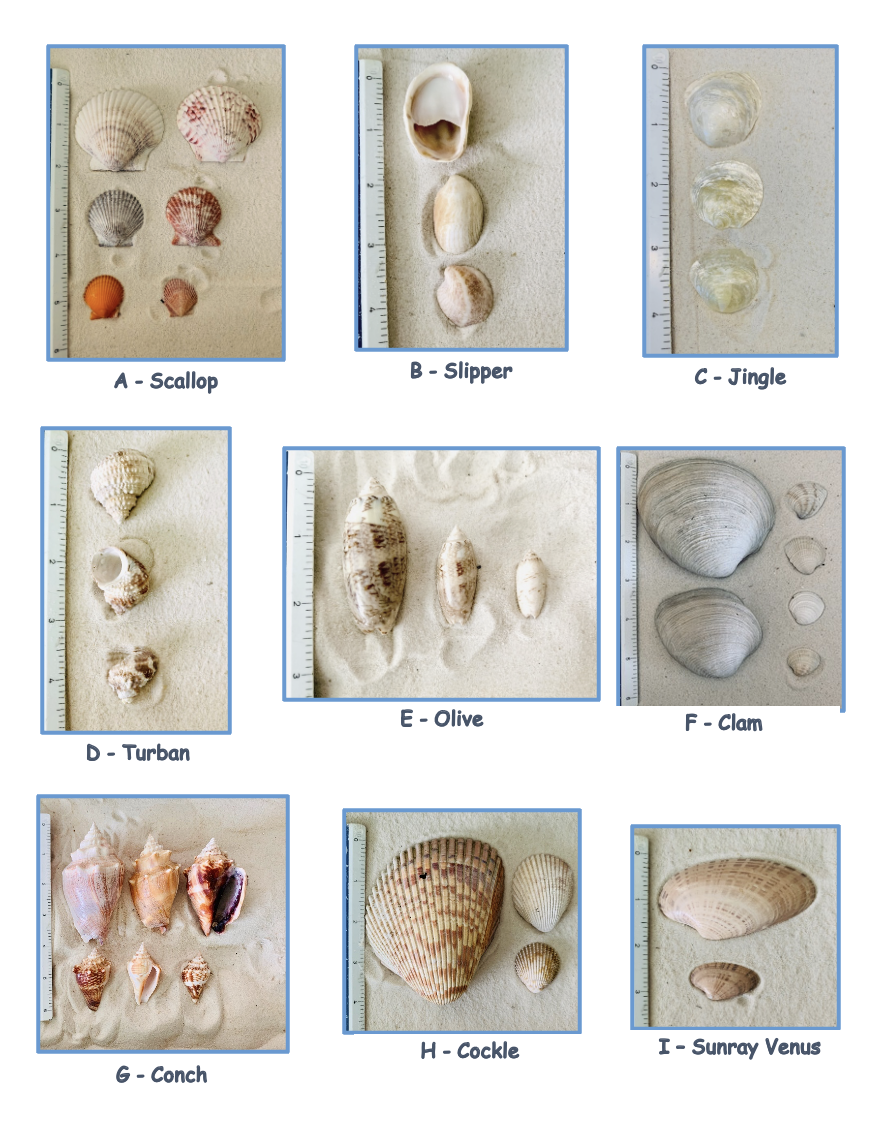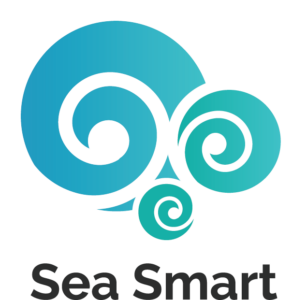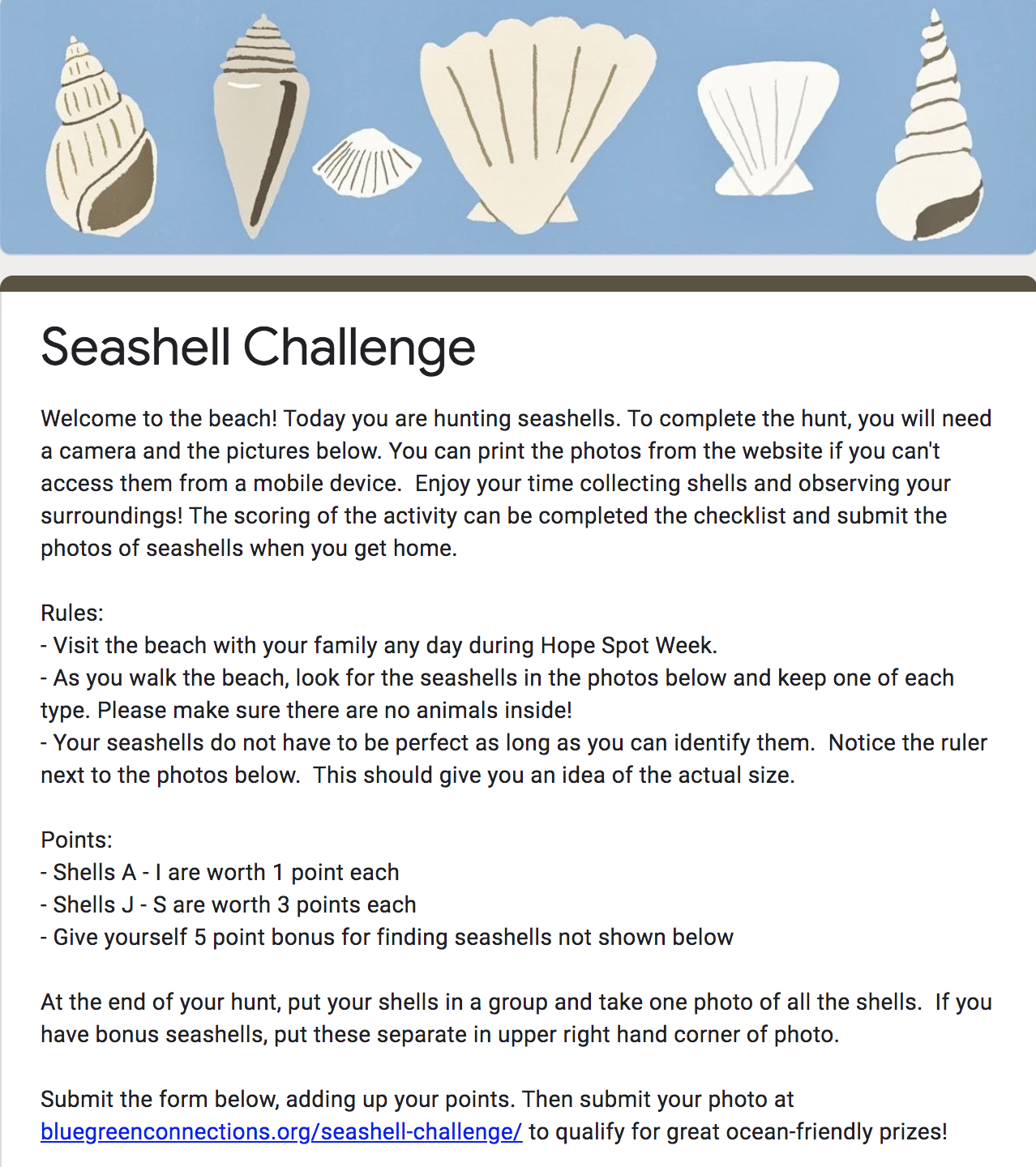Seashell Scavenger Hunt
Seashell Scavenger Hunt
You can now download and print this activity by clicking HERE. Welcome to the beach! Today you are hunting seashells. To complete the hunt, you will need a camera and the pictures below. You can print the photos HERE if you won't have access to a mobile device at the beach. Enjoy your time collecting shells and observing your surroundings! The scoring of the activity can be completed the checklist and submit the photos of seashells when you get home.
Have you ever thought about where seashells come from?
Shells were once a part of living animals commonly known as Mollusks. Mollusks have a soft body that holds the heart, liver, digestive system, and other important organs. Most mollusks make their own shell for protection. They are invertebrates, which means that they don't have a backbone. You will find two types of mollusks on the beach today.
- univalves - animals with one shell such as a conch, whelk, olive and auger
- bivalves - animals with two shells such as clams, oysters, and scallops
As you find seashells, think about whether they are univalves or bivalves. Mollusk shells can be very colorful. Some have shades of pink, orange, yellow, or other colors. The shells often have dotted or striped patterns, too. There are more than 100,000 species, or types, of mollusks.
Why are shells important?
Seashells are an important part of coastal ecosystems. They provide materials for birds' nests, an attachment surface for algae, sea grass, sponges and a host of other microorganisms. Hermit crabs use them as temporary shelters. Seashells also aid in beach
stabilization and create important calcium carbonate sediment as they break down. Understanding where shells come from adds more meaning to their vital role in the ecosystem.


Activity #1 - Sea Shell Scavenger Hunt
Rules:
- Visit the beach with your family.
- As you walk the beach, look for the seashells in the photos and keep one of each type. Your seashells do not have to be perfect as long as you can identify them. Please make sure there are no animals inside!
- Notice the ruler next to the photos below. This should give you an idea of the actual size.
Points:
- Shells A - I are worth 1 point each
- Shells J - Q are worth 3 points each
- Give yourself 5 point bonus for finding seashells not shown below
Entering to win:
- At the end of your hunt, put your shells in a group and take one photo of all the shells. Feel free to get creative with your arrangement! If you have bonus seashells, put these separate in upper right hand corner of photo.
- Complete this form to check off each shell you found and add up the points.
- Submit your photo at the top of this page above with same email address
Activity #2 - Ocean Acidification Experiment on Seashells
 Sea Smart is a charity that delivers innovative, engaging education programs based on science and current ocean issues to empower youth to be environmental champions in Metro Vancouver.
Sea Smart is a charity that delivers innovative, engaging education programs based on science and current ocean issues to empower youth to be environmental champions in Metro Vancouver.
Ocean Acidification Experiment
To see how ocean acidification can affect seashells, watch the video above and then try out the experiment below...
Climate Change and Ocean Acidification
BLUE-GREEN CONNECTIONS, INC. IS A 501(C)(3) NOT-FOR-PROFIT ORGANIZATION WITH REGISTRATION NUMBER CH59415. ALL GIFTS MADE TO THIS ORGANIZATION ARE TAX-DEDUCTIBLE TO THE EXTENT PROVIDED BY LAW. A COPY OF THE OFFICIAL REGISTRATION AND FINANCIAL INFORMATION MAY BE OBTAINED FROM THE DIVISION OF CONSUMER SERVICES BY CALLING TOLL-FREE (800-435-7352) WITHIN THE STATE OR BY VISITING WWW.FRESHFROMFLORIDA.COM. REGISTRATION DOES NOT IMPLY ENDORSEMENT, APPROVAL, OR RECOMMENDATION BY THE STATE.
© Copyright 2019-2020
